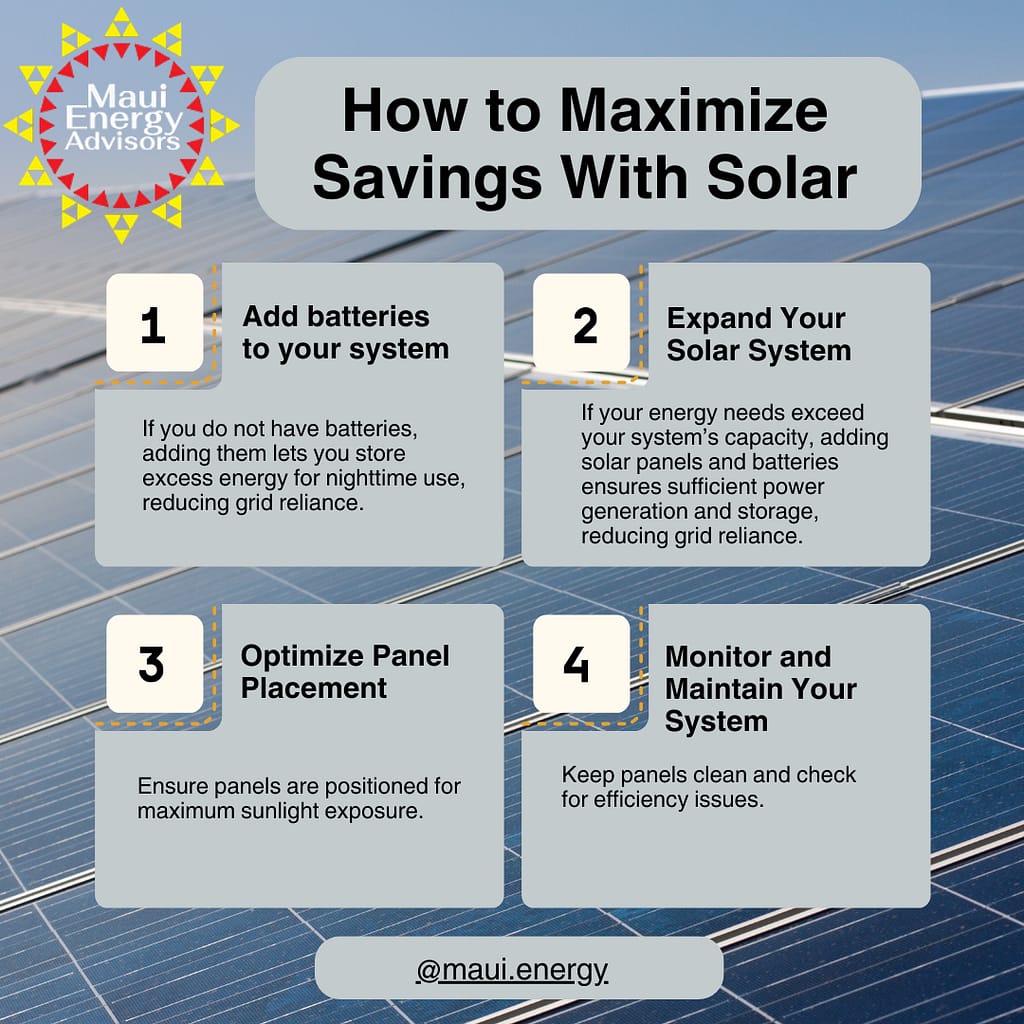If you’ve recently received a letter from HECO regarding a change in your utility program from CGS to Smart DER, you’re not alone. Many customers have reached out with questions and concerns about this shift, as they have noticed their monthly bills go up substantially. This blog post will help clarify what this transition means for you, how it will impact your energy bills, and what steps you can take to mitigate any negative effects.
A Brief History of HECO’s Renewable Energy Programs
Net Energy Metering (NEM)
The NEM program was introduced to encourage solar adoption, allowing customers to receive a 1:1 credit for any excess energy produced by their solar panels. This meant customers could send excess energy to the grid and retrieve it as needed without financial loss. NEM was discontinued in 2015, but those who were already enrolled can continue benefiting from it indefinitely.

Customer Grid Supply (CGS)
After NEM ended, HECO introduced the CGS program. Under this plan, customers received a fixed credit of 17.5 cents per kWh for exported energy. When CGS began, electricity prices were around 22 cents per kWh, making the credit highly beneficial. However, as electricity prices have risen to 43 cents per kWh, the credit has remained the same, leading to higher bills for customers over time.
Additionally, many customers were unaware that CGS participation was limited to seven years. This clause was hidden in the fine print, and was unknown even to many experts in the energy field. As a result, those who enrolled around 2017 are now being notified that their CGS program is expiring and that they will be transitioned to Smart DER.

What is Smart DER?
Smart DER is HECO’s latest energy program, offering a significantly lower export credit rate of just 6 cents per kWh. Additionally, participants are required to install a Smart Meter that transmits energy usage data to HECO every 15 minutes. This drastic reduction in credit value can greatly impact monthly electricity costs.

How Will This Affect You?
The impact of this transition depends on your current energy storage and usage habits:
- If you are completely self-sufficient (i.e., you have batteries and generate enough energy to store), you will not see an increase in your bill, and no action is necessary.
- If you occasionally draw energy from HECO (i.e., your batteries do not store enough to cover all your usage), your bill will increase because your credit value for exported energy will be significantly lower.
- If you do not store any energy (i.e., you don’t have batteries), your bill will increase substantially. With the drop in export credit, any excess energy sent to the grid will return far less value to you to offset your monthly costs.
What Can You Do to Minimize Your Bill?
If you are facing increased costs due to the shift to Smart DER, there are a few steps you can take:
- Install Batteries: If you currently do not have batteries, adding them to your system will allow you to store excess energy generated during the day for use at night, reducing dependence on HECO.
- Expand Your Solar System: If your energy needs exceed your current system’s capacity, adding more solar panels along with batteries can help ensure you generate and store enough power to cover your usage.
The transition from CGS to Smart DER is a significant change, but by optimizing your system with the right upgrades, you can maintain energy independence and minimize costs. If you have further questions about your specific situation, don’t hesitate to reach out to us.

For more information, contact Maui Energy Advisors today at (808) 481-8853 or visit us at www.mauienergy.io
Follow us on Instagram and LinkedIn for updates and insights.